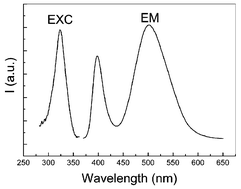The reduction of Eu3+ to Eu2+ in BaMgSiO4∶Eu prepared in air and the luminescence of BaMgSiO4∶Eu2+ phosphor
Abstract
The

* Corresponding authors
a
Key Laboratory of Rare Earth Chemistry and Physics, Changchun Institute of Applied Chemistry Chinense Academy of Sciences, Changchun, P. R. China
E-mail:
zpei@ns.ciac.jl.cn or m_ypeng@yahoo.com
The

 Please wait while we load your content...
Something went wrong. Try again?
Please wait while we load your content...
Something went wrong. Try again?
M. Peng, Z. Pei, G. Hong and Q. Su, J. Mater. Chem., 2003, 13, 1202 DOI: 10.1039/B211624C
To request permission to reproduce material from this article, please go to the Copyright Clearance Center request page.
If you are an author contributing to an RSC publication, you do not need to request permission provided correct acknowledgement is given.
If you are the author of this article, you do not need to request permission to reproduce figures and diagrams provided correct acknowledgement is given. If you want to reproduce the whole article in a third-party publication (excluding your thesis/dissertation for which permission is not required) please go to the Copyright Clearance Center request page.
Read more about how to correctly acknowledge RSC content.
 Fetching data from CrossRef.
Fetching data from CrossRef.
This may take some time to load.
Loading related content
